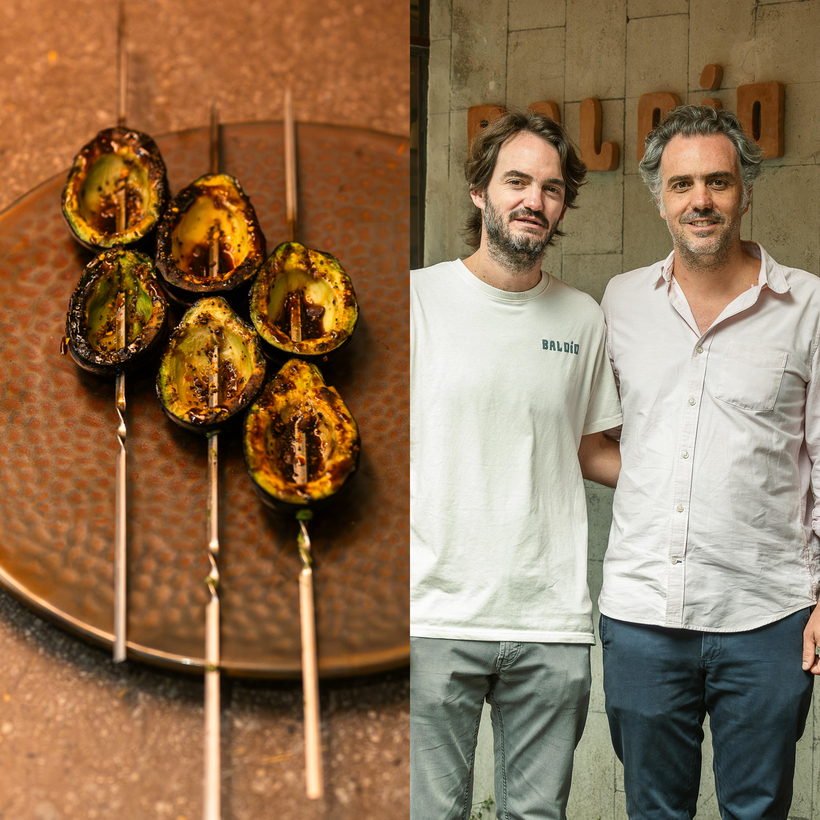If you’ve visited Mexico City in the last few years, chances are you’ve tasted Lucio Usobiaga’s vegetables. Since 2009, the 38-year-old has supplied produce to some of the city’s best restaurants, including the Michelin-starred Pujol and Rosetta, and the popular Máximo Bistrot, as well as Malix, Meroma, Masala y Maíz, and Tetetlán.
The vegetables are grown in Xochimilco, a southern borough of Mexico City, where small, artificial islands known as the chinampas have been cultivated since before Aztec times. Lucio has dedicated his life to re-invigorating ancestral culture and helping peasants overcome such modern challenges as industrial agriculture, pollution, and urban growth encroaching on their land.
In 2009, he co-founded Productos de la Chinampa with friends to supply businesses and individuals with organic produce. In the process, he discovered the potential of regenerative agriculture. He launched Yolcan in 2011 to support farmers and fight monoculture; that project evolved into Arca Tierra in 2020, a partnership with his brother, Pablo.

Despite his efforts to be eco-conscious, Lucio has “always felt that there’s more to be done” in a city of over 22 million, currently experiencing one of its worst droughts in a decade. So the Usobiaga brothers decided to try. Rather than create another farm-to-table restaurant, they went further, integrating the chinampas, fields, and farmers. This week, together with co-founders Douglas McMaster and Mauricio Reyes Retana, they opened Baldío, a zero-waste dining establishment.
At first, Pablo struggled to convince his brother to open a restaurant. Pablo was already well acquainted with the hospitality industry, having established Café de Nadie, a music-and-cocktail bar in Mexico City’s Roma Norte neighborhood, in 2021. But Lucio was disheartened by the negative environmental impact he had witnessed in the food business. “At the beginning, it was to let my brother have his way,” Lucio tells me. “I told [him] that if we’re going to open a restaurant, it has to be the restaurant of our dreams.”

McMaster had created Silo, the world’s first zero-waste restaurant, in London, in 2011, out of frustration with the prevalence of single-use plastic and food waste. He cut out the middleman, going directly to farmers, fishermen, and foragers, who delivered their goods in reusable, returnable vessels.
McMaster strives to utilize every part of every animal and vegetable in Silo’s kitchen. What little doesn’t make its way onto diners’ plates is either fermented (vegetable trims, cheese rinds, and excess dairy) or composted. During its first 18 months, Silo saved every non-compostable, non-fermentable, non-recyclable bit of garbage they had left—which they called “alien waste”—and condensed it into a single four-by-four-inch block.
By the time McMaster met the Usobiaga brothers, his zero-waste system had advanced enough to get Baldío running swiftly. “We have spent 10 years getting that wrong to get it right,” McMaster tells me.
“At the beginning, it was to let my brother have his way,” Lucio tells me. “I told [him] that if we’re going to open a restaurant, it has to be the restaurant of our dreams.”
The project faced its own set of challenges, however: it needed to adapt to the Mexican climate and fit the Usobiaga brothers’ vision. While Silo uses a tasting menu, the brothers insisted that Baldío could not if it were to honor the fluidity of the changing seasons.
Instead of the classic model of appetizers, main courses, and desserts, Baldío proposes a list of 16 dishes. It uses what its founders call an “as it comes” model, which McMaster learned about when working at St. John, the Michelin-starred London restaurant. Baldío has 60 seats, with two dinner seatings and two lunch seatings each day. The chefs adjust quantities based on popularity. Nothing perishable is pre-cooked, ensuring that any leftovers can be re-used.
“It’s much more of an organic flow,” McMaster says. This approach also allows for last-minute changes. “If a peasant farmer in the mountain range of Puebla tells me, ‘We only have these fruits in season,’ but we have a fixed menu,” says Lucio, “we would have to wait until next year [to use them], and maybe that farmer won’t offer them again.”

Baldío uses local ingredients and is therefore inspired by Mexican flavors, but its menu is guided by individual ingredients rather than by traditional dishes. “The flavor is very different because it expresses the health of the soil and the eco-system and the care the farmer has given to the plant or the animal,” Lucio says.
Although Baldío’s menu is predominantly vegetarian, the restaurant’s founders view the consumption of meat and fish as a necessary part of their ecological model. “We have become so disconnected with the life processes that we don’t realize that every living being plays a function in the eco-system,” explains Lucio. They have partnered with Mexican organizations that use ethical cattle- and fish-raising practices, such as Rancho El Risueño and Rancho Neminatura.
To limit the use of water, Baldío partnered with Isla Urbana, a project that harvests rainwater to support water sustainability in Mexico. They also applied the zero-waste system to their cocktail menu. Baldío’s beverage director, Léa Longayrou, designed a bar that relies on taps and pre-batching ingredients to avoid using any ice.
How does one make a drink using an entire fruit and no ice? Longayrou gives me an easy example: the papaya. “Papaya is not just the pulp,” she says. Most people don’t use the skin because they think it’s inedible, but it contains most of the fruit’s flavor, which can be extracted. The pulp is used for the texture and the acidic seeds for the base.
“I’m really happy it started to rain yesterday,” Lucio tells me at the end of our conversation. For him, that’s not small talk—it’s what makes or breaks his week.
Jeanne Malle is an Associate Editor at AIR MAIL


